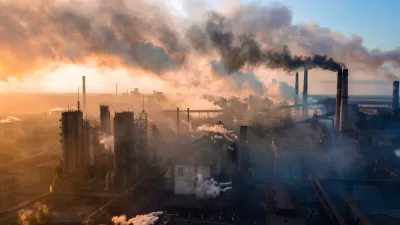The Address Downtown hotel, a 63-story, mixed-use high-rise very close to the world's tallest building, went up in flames on Dec. 31, raising questions about other high-rises that use the same heavy cladding material building on the exterior.
Fortunately only 14 people suffered minor injuries, and the evacuation of the building was very orderly. The cause is still under investigation. People had gathered at the hotel to view the fireworks display at the nearby Burj Khalifa, the world's tallest building. It was the Emirate of Dubai's third high-rise fire in three years. [See below for February fire in the 79-story "Torch" residential high-rise.]
"Ultra-modern, flamboyant designs often involved heavy use of cladding - layers fixed to the outside of buildings for decoration, insulation or protection," writes Andrew Torchia, Middle East economics editor for Reuters. "(E)xperts are asking if the layers may in some cases make buildings more vulnerable to fire."
"The fires that have erupted in Dubai landmarks have raised concerns about the quality of material used to clad the emirate’s buildings," The National, a leading [United Arab Emirates] UAE newspaper, reported on Saturday.
Experts say most of Dubai’s approximately 250 high-rise buildings use cladding panels with thermoplastic cores, the newspaper said. Panels can consist of plastic or polyurethane fillings sandwiched between aluminium sheets.
In February last year, hundreds of people were evacuated from one of the world's tallest residential buildings when fire broke out at the Torch, a 79-storey skyscraper in Dubai. An investigation by the building's management found most of the damage was to the exterior cladding.
Dubai, with over 2 million residents, is the most populous city in the United Arab Emirates, according to Wikipedia.
FULL STORY: Dubai blaze raises questions over Gulf skyscraper design

Study: Maui’s Plan to Convert Vacation Rentals to Long-Term Housing Could Cause Nearly $1 Billion Economic Loss
The plan would reduce visitor accommodation by 25% resulting in 1,900 jobs lost.

Alabama: Trump Terminates Settlements for Black Communities Harmed By Raw Sewage
Trump deemed the landmark civil rights agreement “illegal DEI and environmental justice policy.”

Why Should We Subsidize Public Transportation?
Many public transit agencies face financial stress due to rising costs, declining fare revenue, and declining subsidies. Transit advocates must provide a strong business case for increasing public transit funding.

Paris Bike Boom Leads to Steep Drop in Air Pollution
The French city’s air quality has improved dramatically in the past 20 years, coinciding with a growth in cycling.

Why Housing Costs More to Build in California Than in Texas
Hard costs like labor and materials combined with ‘soft’ costs such as permitting make building in the San Francisco Bay Area almost three times as costly as in Texas cities.

San Diego County Sees a Rise in Urban Coyotes
San Diego County experiences a rise in urban coyotes, as sightings become prevalent throughout its urban neighbourhoods and surrounding areas.
Urban Design for Planners 1: Software Tools
This six-course series explores essential urban design concepts using open source software and equips planners with the tools they need to participate fully in the urban design process.
Planning for Universal Design
Learn the tools for implementing Universal Design in planning regulations.
Smith Gee Studio
Alamo Area Metropolitan Planning Organization
City of Santa Clarita
Institute for Housing and Urban Development Studies (IHS)
City of Grandview
Harvard GSD Executive Education
Toledo-Lucas County Plan Commissions
Salt Lake City
NYU Wagner Graduate School of Public Service



























